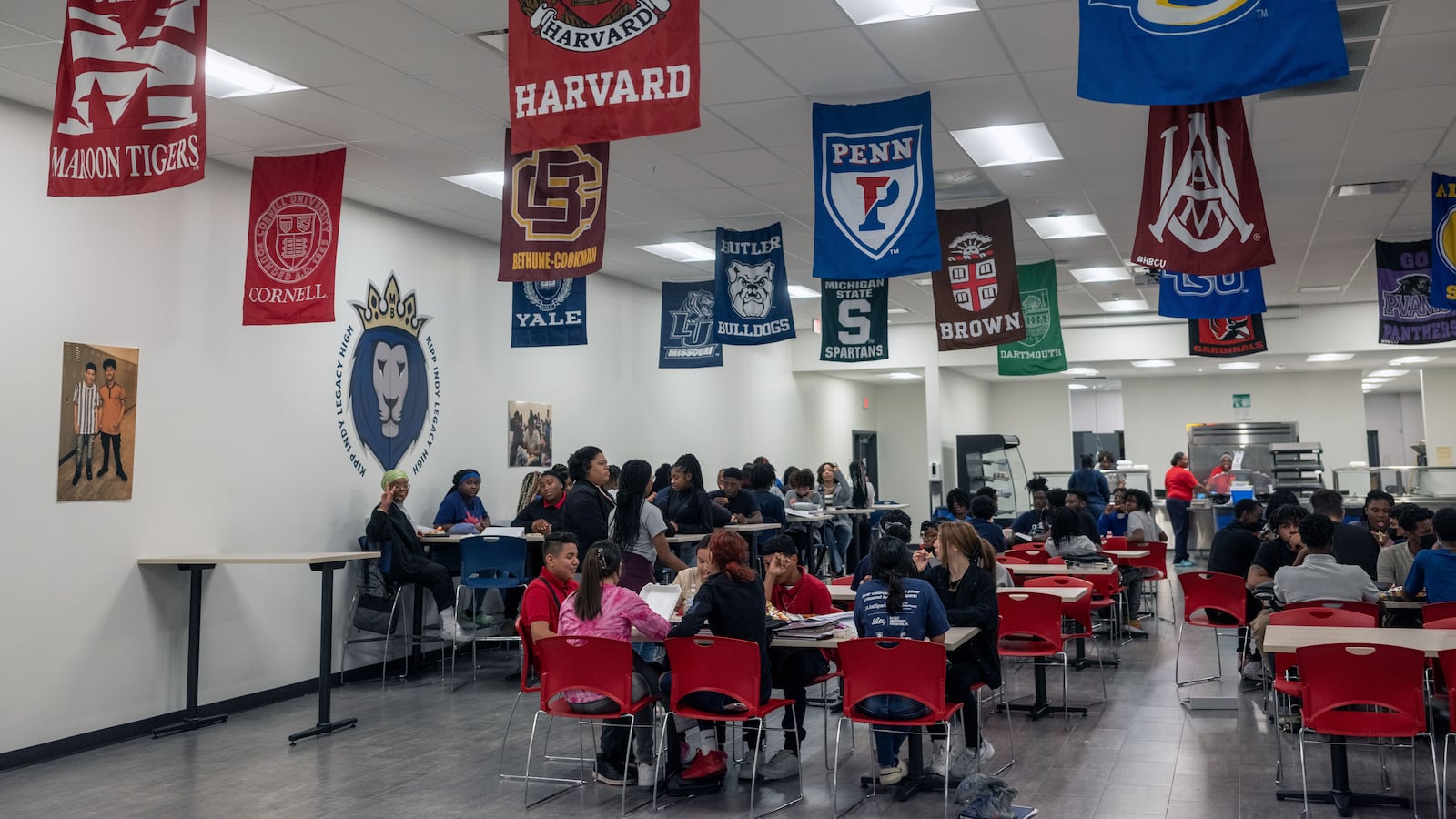Shariah Miller will always remember leading over 100 of her fellow students on a Juneteenth Peace Walk through Indianapolis’ Martindale-Brightwood neighborhood this summer.
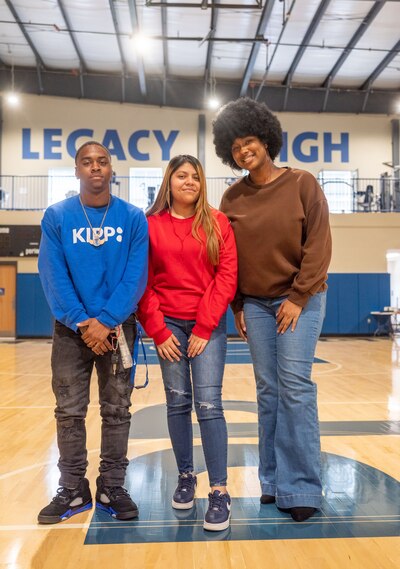
Their route passed by Miller’s school, KIPP Indy Legacy High, where she and 98 other students will become the first graduating class this spring.
Reflecting on the moment when she took the megaphone to address the crowd during the walk, Miller said the KIPP teachers and staff who have known her since freshman year “never fail to remind me of when I first started here how quiet I was and how much I kept to myself.”
That changed, she said, as she found a passion for social justice in high school, through events like the peace walk and in encouraging other young people to speak out.
“I spoke about how important it is for events like this to be student-led because it gives young people voices that deserve to be heard,” she said of the walk. “They felt like they were making a change and their voices were heard by being at this event.”
The Class of 2023 is not just Legacy’s first class, but the first class to graduate within the boundaries of Indy’s Martindale-Brightwood neighborhood, a historically Black, working class area affected by industrial collapse, the construction of a highway that bisects the community, and federally mandated busing.
That graduation will be a moment of pride for Martindale-Brightwood, where the school — part of the national KIPP charter school network and the Indianapolis Public Schools Innovation Network — has become a focal point in the neighborhood’s efforts to improve residents’ quality of life.
Even amid the pandemic and other pressures, the students have worked hard to assist the community through a variety of civic-minded projects. And supporting their neighbors has helped many students, in turn, identify their future goals.
“It’s been amazing to watch as they have grown not just in the physical sense but in knowing who they are and the impact they want to make on the community,” said David Spencer, the school leader.
Adults working to improve Martindale-Brightwood have also been paying attention. Community leaders believe the students and the school have been a key part of efforts to boost the area’s long-term prospects.
“We want high quality options for our kids, where kids do not have to leave our neighborhood to have access to high quality education and be able to compete,” said Barato Britt, executive director of the Edna Martin Center, which provides social services in the neighborhood. “When that’s provided within the community, it breaks certain cycles, helps us revitalize the neighborhood, and enhances the community pride that already exists.”
Stepping up to help hard-hit students
Getting here hasn’t always been easy.
The school opened its doors to its first class of 121 freshmen in 2019, and closed for COVID only a few months later. When it reopened in 2021, one-third of all students didn’t show up for in-person classes. Around 9% of all students didn’t return to the school at all.
As with students around the country, the pandemic had hit them hard. They were living on their own in cars or sleeping on park benches, said Robyn Russell, a KIPP Indy Legacy mom who volunteered to go find them. Some students and their families were going hungry.
And so many students lacked access to running water that Russell started doing their laundry overnight and sending them to shower in the school’s locker rooms before the morning bell rang.
The school used its partnership with the Edna Martin Center — located on the same campus as Legacy — to help families access housing and food assistance. Russell started to keep snacks in the front office.
“We wanted to make sure we met all of the needs we could possibly meet to ensure a positive trajectory for the students’ success in school and for parents to understand that they do have support and resources,” said Russell, who also works as manager of school operations for the school.
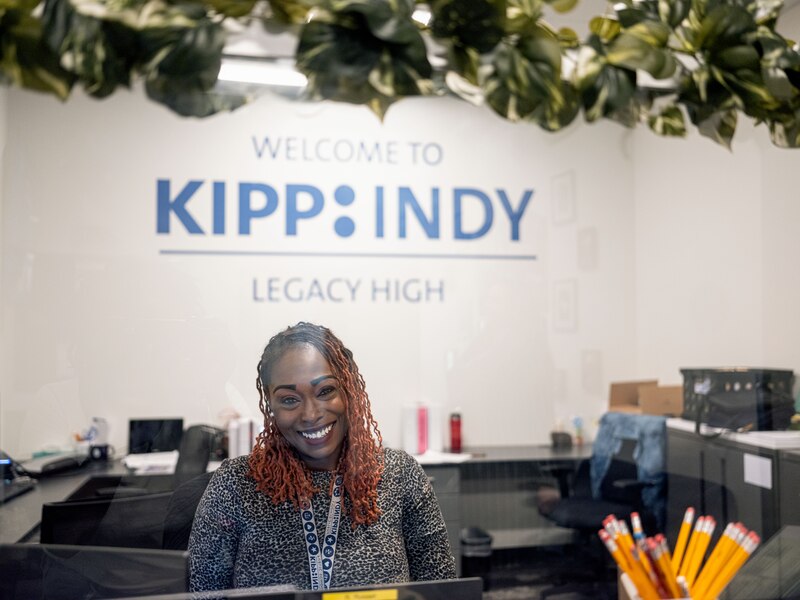
Students also grappled with the isolation of online school during pivotal moments of their high school years.
Devon Wilson, a senior, said that while he kept his grades up, “The part I didn’t like about quarantine was the social part — you can’t be social.”
Miller, meanwhile, said she lost the motivation to do virtual school, which would later make an impact on her GPA.
“I always think about how I wish I didn’t. Because of the fact that I lost that motivation, I ended up ghosting school the rest of the year,” Miller said.
And some students took on additional work on behalf of their peers. Senior Jessica Torres found herself translating the constantly evolving situation for her fellow Spanish-speaking students.
“I feel like that kind of put pressure on me, but I didn’t mind helping them out because my parents have always shown me it’s like being human,” she said.
Stepping into leadership roles
But even during COVID, and at times because of it, students found ways to connect with the community.
In 2020, while still learning virtually, Wilson and his peers hosted a voter registration drive, walking around the neighborhood to encourage residents to register to vote ahead of the presidential election and “to learn what they could earn from voting,” he said. They registered over 100 people to vote in two days.
Other students helped in vaccine clinics. And when the Red Cross needed volunteers to reach out to senior citizens about their fire and smoke alarms, KIPP students stepped in, said Gina Lewis Alexander, executive director of the Oasis Christian Community Development Corporation.
“We try to identify young leaders,” Lewis Alexander said. “We need more young people at the table to help make decisions.”
Coming back to campus last year presented an opportunity not just to step into additional leadership roles, but to connect and reconnect — even if that involved painful moments. When Miller led the Juneteenth Peace Walk, she heard her peers share stories of how police violence had affected them.
“It was such a collective and collaborative moment to be so heartfelt with so many people you’ve always known, or have never known,” she said. “It was heartwarming, but also gut-wrenching.”
In turn, local leaders like pastors and advocates have served in the school as mentors and educators — two will teach debate and Black history this fall.
“Sometimes we think of things as: How can the school support the community? But it’s actually not that at all, it’s been: How can we be a part of a community that’s supporting and benefiting one another to ensure that we continue to grow?” said Spencer, the leader of Indy Legacy High.
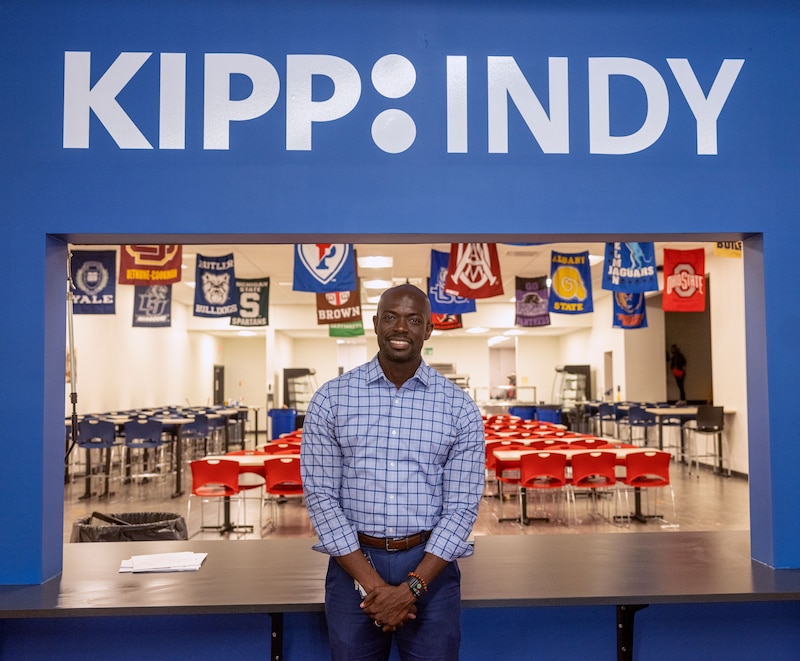
Countering decades of hardships
Having a high school that’s within walking distance has been a boon for many students, school and community leaders said. Students gravitate to campus even when school isn’t in session, said Russell, the school operations manager. They walk from school to the nearby Frederick Douglass Park.
Just over one-third of the graduating seniors come from Martindale-Brightwood’s 46218 ZIP code, where the school is located and the median household income of $26,615 is around half that of the figure for Indianapolis. The remaining students come from adjacent ZIP codes.
Elsewhere, students might take that proximity for granted. But in the past, many local students haven’t had a school so close, said Lewis Alexander, the community leader, who described the history of the neighborhood as traumatic for many residents.
Its major upheavals have included the decline of the railroad industry, which had employed many residents, as well as the construction of the Interstate 70 that bifurcated the neighborhood, she said. Residents — especially white residents — and businesses left.
Federally mandated busing that lasted through the 2000s also took students out of the neighborhood to districts south of the city, leading to enrollment declines and closures in the neighborhood schools.
The closest high school to the area since the turn of the century has been Arsenal Tech, located south of the interstate, according to IPS. Another charter school specifically for students who had experienced juvenile detention operated in the neighborhood from 2015 to 2019.
It was important for KIPP to embrace the Martindale-Brightwood as it considered opening schools in the neighborhood, said Britt, the leader of the Edna Martin Center, who also serves on KIPP Indy’s board.
Residents have long emphasized a need to invest in education as part of their plans to improve quality of life in the neighborhood. While they didn’t seek out KIPP specifically, the innovation charter model that KIPP uses was appealing, Britt said, because the school has support from IPS while operating independently.
Britt said KIPP demonstrated its commitment when its middle school returned to the neighborhood in 2015 after IPS temporarily relocated it to another part of town.
The school operates a community council where local leaders provide input monthly, said Lewis Alexander. Its logo features an “MB.”
After decades of hardships imposed from the outside, Martindale-Brightwood is undergoing a positive transformation. Through an infusion of resources, including a $30 million federal grant, the community is getting resources like a new library and a family life center.
At the same time, these changes have already attracted wealthier homebuyers to the neighborhood and generated some concerns about gentrification, Britt said. Indianapolis Public Schools has also recently highlighted links between its most-desirable programs and “a particularly sharp increase in housing value” in nearby neighborhoods in an FAQ on its plans to close and reshuffle some schools.
“It’s one thing to have a high quality preschool to college school network but another if we know the individuals we know it was designed for are being displaced,” Britt said. “But overall, though, there is excitement. There is time for us to maintain ownership.”
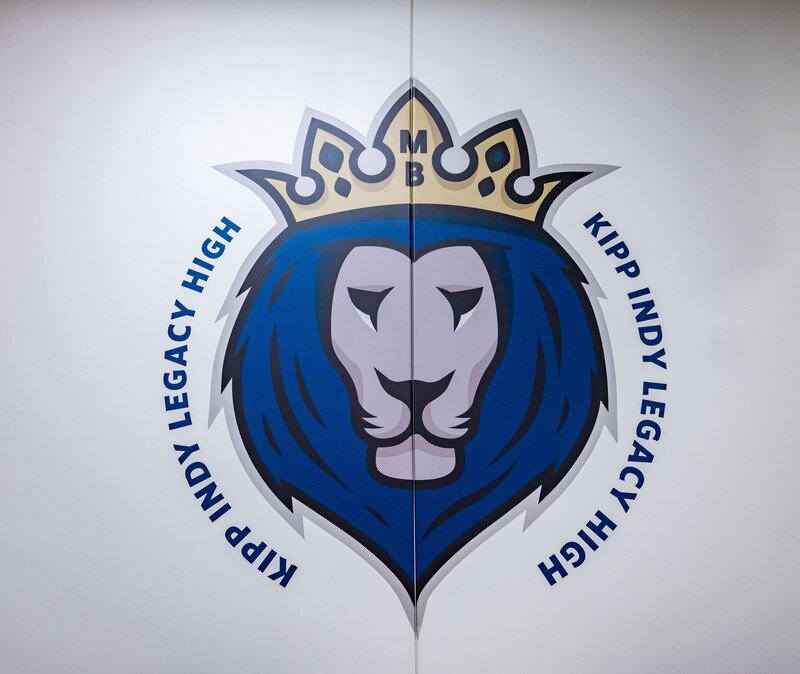
Looking ahead to graduation
The school hopes to host its graduation ceremony at Martin University, in the heart of Martindale-Brightwood, with enough space for students to bring as many guests as they wish.
“I’m going to cry from beginning to end,” said Spencer.
Approximately 54% of the graduating class is interested in enrolling in a four-year college, while another 35% intend to pursue an associate’s degree, career technical education, or military training, said YeVonne Jones, the school’s managing director of postsecondary counseling and social services. The remainder are headed to the workforce, she said.
After graduation, they’ll still have access to Jones and KIPP Indy counselors, who will make sure they’re on track with college enrollment deadlines and credits and even offer microgrants to students who are facing stumbling blocks.
“The model here that doesn’t stop at graduation is so important to the community to know,” Jones said. “We take this inaugural class seriously, but we’re also building a legacy with our 9th and 10th grade students, and what we hope to provide in the future.”
Jessica Torres, the senior who translated for her fellow students, said KIPP taught her that college isn’t for everyone. She’s interested in pursuing construction management in order to grow her dad’s construction company.
“I haven’t told him yet, because I don’t want him to get his hopes up and then I change my mind,” she said.
But Torres said it’s clear to her that her trajectory would have been different without the environment at KIPP. She considered dropping out once — but kept going with the encouragement of the school’s teachers and administrators.
Miller, who led the Juneteenth march, said she’s most interested in attending a historically Black college or university. In addition to her own goals, she’d like to be a model to her younger sister, who’s now a freshman at Legacy.
“I am not only setting an example for other freshmen, I’m specifically setting an example for her,” Miller said. “Not that she needs to follow in my footsteps, because we’re two different people. I just hope that she’s as diligent as I try to be.”
Aleksandra Appleton covers Indiana education policy and writes about K-12 schools across the state. Contact her at aappleton@chalkbeat.org.


